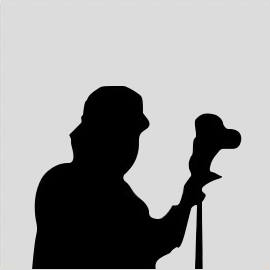0 Likes
The Arno is a river in the Tuscany region of Italy. It is the most important river of central Italy after the Tiber.
...





Overview and HistoryFlorence has been relaxing since the very beginning, when Julius Caesar adapted the location to serve as a home for veteran soldiers. Its name means "flourishing" and that's what it's been doing ever since.If we can ignore that pesky evidence of neolithic rock-smashers, Florence has been occupied for about two thousand years.Caesar wisely chose the intersection of two rivers for the location of Florence, for defensive purposes. Admittedly he was not the first person to think of this idea, but we'll let him have it for now.The Arno and Mugnone are the rivers over which Florentines built their beautiful bridges, in order to have something else to decorate. See Ponte Veccio for illustration.Like all Roman cities, Florence was originally rectangular in shape, bearing long straight roads with ninety degree intersections. The heart of the city was originally at the intersection where today, you will find the Piazza della Republica."Piazza" means plaza, not pizza. For my American subway riders.Being located in a fertile valley along a major river attracted people, commerce and wealth, according to the laws of burgeoning civilization, and Florence grew up to be a leader in all the new phases, such as the Cult of Isis and later, Christianity.The dark ages hit Florence a little earlier than the rest of Europe. Because of its location on the Italian peninsula, it was fought over viciously during the Gotho-Byzantine war. When Florence was cut off from communications and trade with Rome in the 6th century, its status descended into terrible Lombard dominion most, most foul.Charlemagne and the Carolingian empire were next up in the roster of rulers, so Florence became a county of the Holy Roman Empire.Over the next five centuries Florence experienced more growth and construction and landed as the capital of the Tuscany region in the thirteenth century. Merchants' associations multiplied and brought international trade relations to Florence, and yet more wealth for the construction of Gothic buildings, such as the Cathedral Santa Maria del Fiore.By the thirteenth century, Florence had rightly earned the reputation as the main city of the West. To symbolize this, they constructed the Palazzo della Signoria.Enter Black Plague, 1348. Cue flood, wipe out bridges over Arno river. Begin serious urban planning as of fourteenth century, to remedy the economic and political crises.Remedy? Rhymes with Medici? The Medici family took power by representing the disenfranchised middle class, and began the Italian Renaissance proper.I suppose being bankers to the Pope didn't hurt the Medicis in their stellar rise to power and fame. The family sponsored generations of artists and thus became responsible for the creation of unsurpassable masterpieces by such titans as Leonardo di Vinci, Michaelangelo, Donatello, Boticelli, Brunelleschi... apologies to the curtness of this sneeze of a historical kleenex I write.Let's jump to the year 1737, when the last of the Medicis died. Florence temporarily became part of the Austrian empire, then the capital of Italy in 1865. Rome took over six years later as capital and we enter the modern times.Florence was occupied by the Germans for a year during World War Two. Mussolini met here with Hitler in 1940, after which he led Italy into the war as an Axis power.In Florence, you will get an education in the Renaissance whether you mean to or not. Her progress now continues into the third millenium, where preservation may be the key word. Automobile exhaust is bad for marble, you know?Getting ThereIf traveling by air, you'll fly into either Pisa International Airport or Peretola Airport. Or the ocean but let's say that won't happen.Peretola is closer to Florence (5km) but it's a small, single-runway airport. In 1990 it was renamed after Amerigo Vespucci, so Peretola is also called Vespucci just to confuse matters. From it you can take a bus, taxi or rent a car to get where you're going. The bus takes about half an hour and costs less than five Euro.Pisa airport is keeping Tuscany's profile high in the world! The best way to connect to Florence is by the train, which costs about the same five Euros but takes an hour and a half.Arriving by train is another option for European travelers. For some reason they haven't finished the underground transatlantic subway so Americans will have to fly.The Santa Maria Novella train station is right in the center of the city and offers connections to bus lines, taxis, or your shoes for walking. For long range view, it connects Rome, and all of southern Italy, to the rest of Europe.Car rental information is here. Practice yelling and swerving first so you'll be ready.Taxi fare from Vespucci airport should be about fifteen Euro.TransportationThe city transit is run by ATAF bus company. Tickets are under two Euro and you can buy them all over the place at newspaper stands and such.Most importantly, the center of the city is closed to through traffic and requires a special residency permit to drive there. The restricted area is called the ZTL, or Zone of Traffic Limitation. Car renters make note.People and CultureFlorence is a very international city and they're on the Euro, so visiting while you're in Europe is no problem. Skipping Florence is a problem. Trying to describe it is an even bigger one, so come and have a look for yourself. The drinking age is only eighteen and the city is filled with students.Things to do & RecommendationsIf you speak the language of food and wine, Florence will be your home away from home. Tuscany is one of the world's great wine producers; the Chianti region is only a few clicks west of Florence.Outdoor cinemas, theater, opera, ballet, cafes, and museums will easily fill up your time walking and gawking.Here is a short list of pinpoints to start with in Florence, again with apologies to everything and everyone we had to leave out in consideration of space.Michaelangelo's DavidSanta Croce: medieval Franciscan basilica, National Central LibraryRifredi: where you can find Medici villas and also Chinese and African immigrants, and Peretola airport.Check out Oltrarno for a kinda bohemian neighborhood.For nightlife, go through all the floors of Central Park (the club) and call me in the morning. Which will be around 3pm if you really do it. Here's the best link we've got since their site went down.Now can you please pass me the carafe? People do not grow any older while we're at the table. Thanks!Text by Steve Smith.